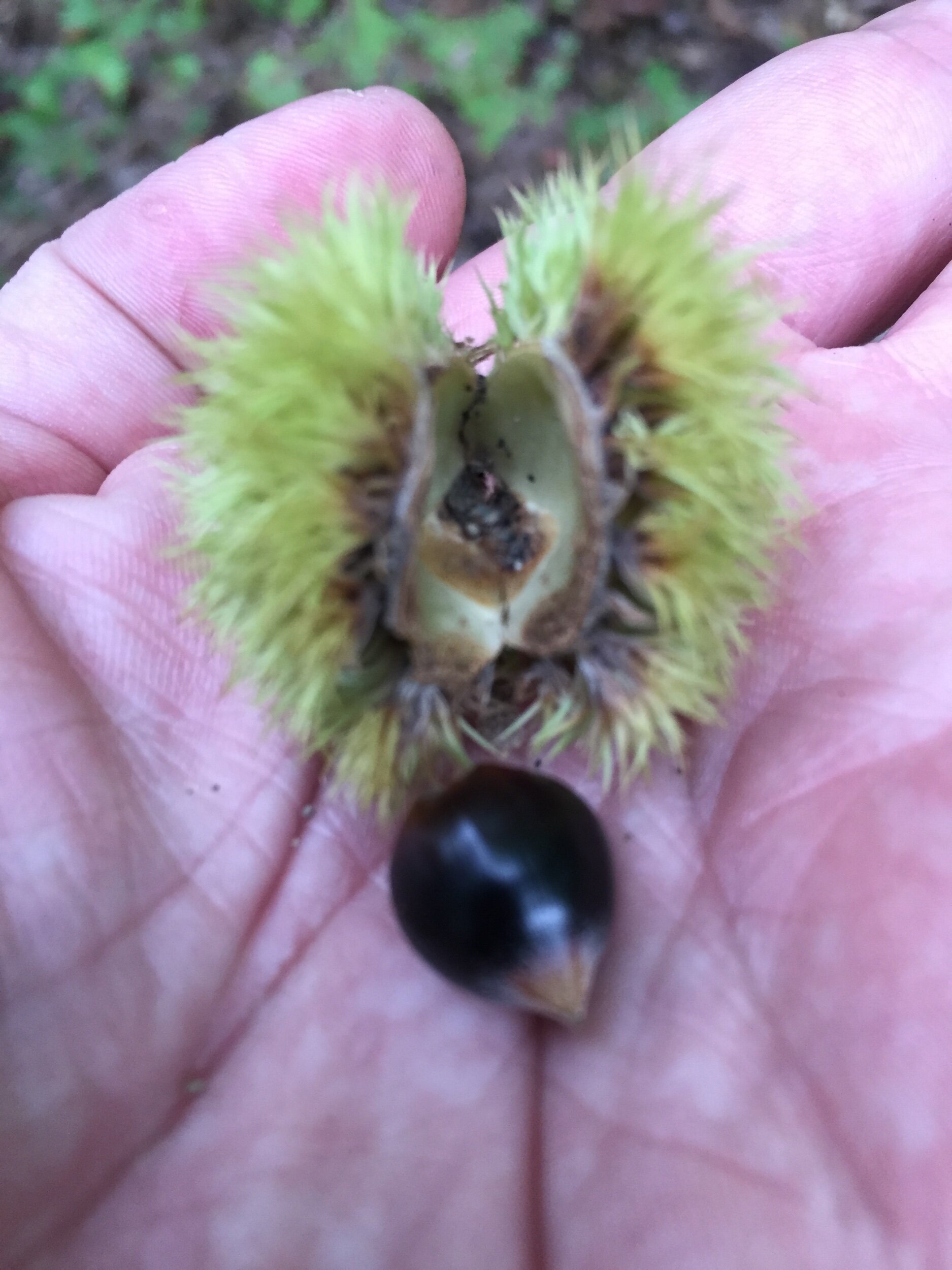Chincapin Nuts
/The following article is re-posted from Backwoods Adventures. I’ve shared their articles a few times - Scott doesn’t blog very often but whenever he takes the time to share, I always learn something and I want to share it! He has been beyond gracious in allowing me to do so, as well as sharing pictures he brings back from his remote jaunts.
Just one note for you - I suppose this article was the first time I’ve ever seen the word CHINCAPIN in writing. We always call them “Chinky-pins” and I would’ve had to look it up to spell it correctly!
The American Chincapin
We recently ran across one of my favorite treats in the backcountry! A delicious wild nut called a Chinquapin.
The American Chinquapin (Castaneda pumila) is a “species” closely related to the chestnut although smaller. Also commonly known as the Allegheny Chinquapin or dwarf chestnut.
It is a deciduous tree found mostly in the eastern and southeastern United States. Sadly populations have declined over the last several year.
The Chinquapin tree can range in size from a small looking shrub to a small looking tree.
It’s nuts are edible and quite sweet when mature in the fall of the year. It has single seed burs. This means each burr that opens into two halves will have one small nut inside which gives the tree a distinctive chestnut look.
Legend has it that Captain John Smith not knowing what they were wrote the first European record of a Chinquapin in 1612. “The Indians have a small fruit growing on a little tree, husked like a Chestnut. This they call a “Checkinquamins”, which they esteem a great daintie.”






